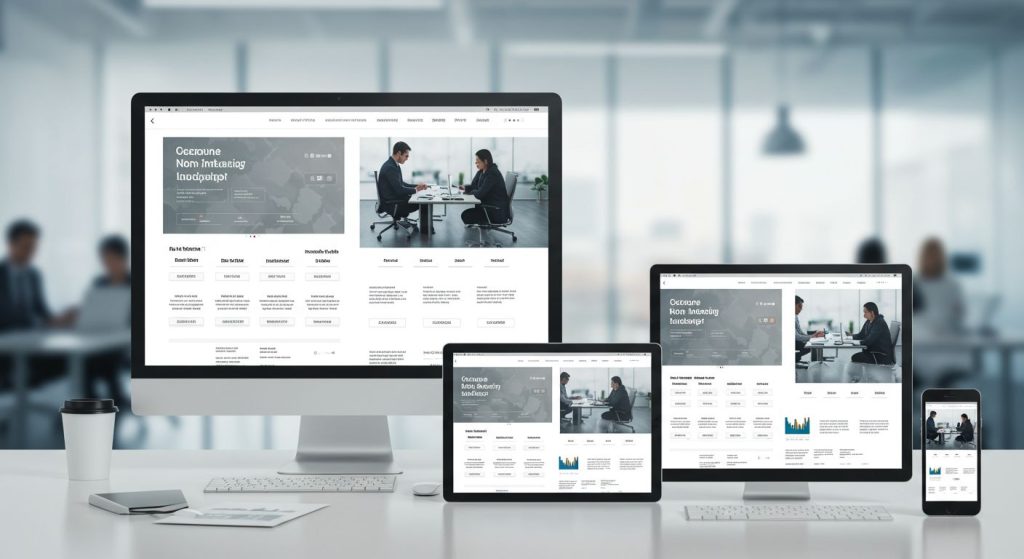In today’s digital landscape, businesses must establish a strong online presence to remain competitive. One of the most effective ways to achieve this is by creating a corporate website. A corporate website is a company’s official online presence, serving as a hub for information, branding, and customer engagement. It reflects a company’s identity, values, products, services, and mission while ensuring credibility and professionalism. Whether you are a startup, a mid-sized business, or a multinational corporation, a well-structured corporate website is crucial to success.
This article provides an in-depth guide to corporate websites, their classifications, and essential components.

1. Understanding Corporate Websites and Their Importance
A corporate website is more than just an online business card; it is a strategic asset that influences branding, marketing, and customer relationships. Unlike personal blogs or e-commerce stores, corporate websites provide a comprehensive platform to communicate a company’s purpose and value proposition.
Key Benefits of a Corporate Website:
- Brand Representation – A well-designed website establishes a company’s authority and credibility.
- Customer Engagement – Enables businesses to interact with potential and existing customers through contact forms, chatbots, and social media integration.
- SEO and Online Visibility – Helps businesses rank higher on search engines and attract organic traffic.
- Lead Generation – Serves as a platform for capturing leads through sign-ups, newsletters, and contact forms.
- Investor and Partner Relations – Communicates financial information, corporate responsibility initiatives, and partnership opportunities.
- Recruitment and Career Opportunities – Displays job openings and company culture to attract top talent.
- Information Hub – Offers press releases, blogs, and reports to keep stakeholders informed.
Understanding these benefits allows businesses to maximize the potential of their corporate websites for growth and reputation management.
2. Industries and Brands with Corporate Websites

Corporate websites exist across various industries, each serving different purposes and target audiences. Here are some key industries where corporate websites play a vital role:
a) Digital Marketing Agencies
These websites showcase branding, SEO, social media services, case studies, and client testimonials to attract businesses seeking online marketing solutions.
b) Real Estate Companies
Real estate websites provide property listings, virtual tours, mortgage calculators, and agent contact details to facilitate property buying and selling.
c) Automotive Companies
Leading automobile brands use their corporate websites to display new models, vehicle specifications, financing options, and dealership locations.
d) Government Establishments
Government websites provide public information, regulatory updates, job postings, and digital services such as tax filing and permit applications.
e) Healthcare and Pharmaceutical Companies
These websites feature health services, research findings, medical facilities, and online appointment booking functionalities.
f) Financial Institutions
Banks and financial service providers use corporate websites to offer online banking, investment insights, credit applications, and customer support.
g) Educational Institutions
Universities and training institutes use corporate websites for course information, admission details, research publications, and student portals.
h) E-Commerce and Retail Businesses
Major retail brands integrate e-commerce features within their corporate websites, offering catalogs, customer accounts, and online shopping experiences.
i) Technology and Software Companies
Tech firms use corporate websites to showcase software solutions, product documentation, developer resources, and customer support.
j) Hospitality and Travel Industry
Hotels, airlines, and travel agencies utilize websites for booking management, virtual tours, and destination guides.
k) Non-Profit Organizations
NGOs and charity organizations use corporate websites to share their mission, donation options, volunteer opportunities, and impact stories.
The List is endless, Every company out there into one form of business or the other needs a corporate website to promote their digital presence, Check out our Web Design Packages to establish a corporate website for your brand today.
3. Essential Components of a High-Performing Corporate Website
A corporate website must have key elements that enhance user experience, branding, and conversions. Here are essential components every corporate website should include:
a) Homepage: The First Impression
The homepage must be visually appealing, informative, and easy to navigate. It should include:
- A professional logo
- A compelling headline and subheading
- A clear value proposition
- Call-to-action buttons (CTA)
- Quick navigation links
b) About Us Page: Telling Your Story
This section shares the company’s mission, vision, history, and leadership team. It builds trust and credibility with visitors.
c) Services or Products Page
A well-organized list of services or products with descriptions, benefits, and pricing details is crucial for converting visitors into customers.
d) Contact Page
A contact form, email address, phone number, and physical address ensure customers can easily reach out to the company.
e) Blog Section
Publishing valuable content related to the industry helps improve SEO rankings and positions the company as an authority.
f) Testimonials and Case Studies
Featuring client testimonials and case studies adds credibility and builds trust among potential customers.
g) Careers Page
For attracting top talent, this section should list job openings, employee benefits, and insights into company culture.
h) Privacy Policy and Terms of Service
A corporate website must include legal disclaimers, privacy policies, and terms of service to comply with regulations and build trust.
Conclusion
A corporate website is an essential business asset that establishes credibility, engages customers, and drives growth. By understanding the different classifications, incorporating essential components, and following best practices, businesses can create a website that enhances their online presence and boosts success.



